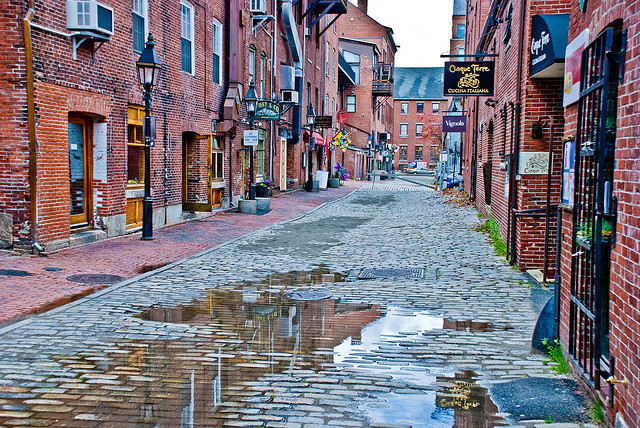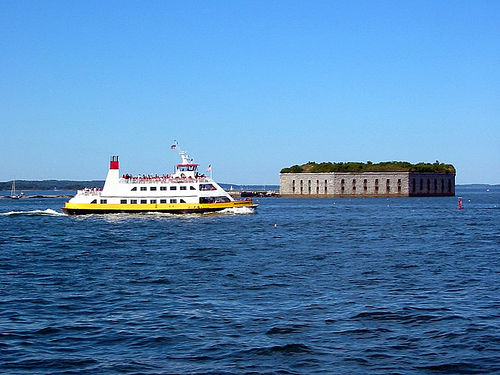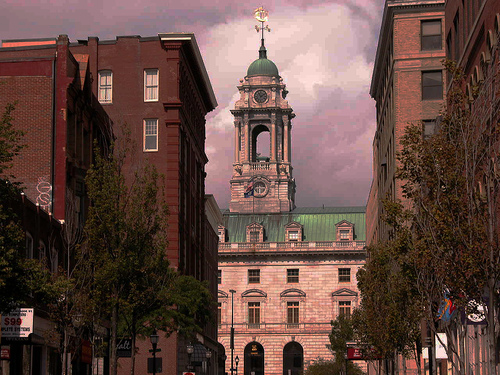In 1658, a group of men and women from the Massachusetts Bay Colony made their way north into the Province of Maine where they established the town of Falmouth. Successfully withstanding much conflict with Loyalist and the Wampanoay Tribe, the city of Portland emerged as the capital of the new State of Maine in 1820. Since its induction, Maine remained a controversial state. It was a key political battleground during the Abolition Movement, and also was the first state to prohibit the sale and use of alcohol for recreational purposes.
Prohibition was championed by Neal Dow, a Portland resident who also served as state legislator, two-time mayor, and candidate to sit as the US President. Dow had apparently pushed the Prohibition agenda while still storing large quantities of alcohol in a facility within the city. It was said that the hoard was strictly used for mechanical and medical purposes, a detail which was consistent with the law, and also overlooked by most media outlets at the time. Word got out about the alcohol, and on a June afternoon in 1855 around 2,000 people gathered around the building in protest; this would be known as the Rum Riot. A large portion of the protesters were Irish immigrants. They saw Prohibition as an attempt to muffle their culture and they came to lash out. After alcohol prohibiting laws were dissolved, and Neal Dow passed away, his home (on Congress Street) was left to the Women’s Temperance Union, a group dedicated to promoting alcohol-free lifestyles.
 It was during the time of Prohibition when Henry Wadsworth Longfellow gained recognition as one of the country’s greatest literary minds. As he was a Portland Native, most of his works were inspired by life in New England. The cold winters, abounding fauna, and flora are all regular features in his writings. Today, his childhood home still stands just steps from Portland’s Monument Square. Maintained by the Maine Historical Society, it is open to the public throughout the year, and is kept in its original 19th century condition.
It was during the time of Prohibition when Henry Wadsworth Longfellow gained recognition as one of the country’s greatest literary minds. As he was a Portland Native, most of his works were inspired by life in New England. The cold winters, abounding fauna, and flora are all regular features in his writings. Today, his childhood home still stands just steps from Portland’s Monument Square. Maintained by the Maine Historical Society, it is open to the public throughout the year, and is kept in its original 19th century condition.
From the turn of the century, Portland became one of the largest ports in the country, having all European imports pass through its harbor. The new thriving community had at their disposal an extensive rail and trolley system which serviced destinations throughout the city. Riverton Trolley Park was a popular hang out at this time. With a large casino, riverside amphitheatre, and scenic promenades, it was “the place to be” for many years. Soon the city’s train and trolleys became obsolete, thanks to the invention of the automobile and new gambling laws. The Trolley Park ruins remain today where visitors are lead through walkways along the banks of the Presumpscot River on outer Forest Avenue .
 Because of Portland’s influence as the busiest and closest port to Europe, it gained recognition as a strategic location during the War of 1812, the Civil War, as well as the First and Second World Wars. Fortifications were built and manned during each of these events, most of which still stand today. Among the most visible of these structures is Fort Gorges (see right) on Hog Island. The large fort was constructed in 1861 by the Army Corps of Engineers around the same time the Civil War was winding down. Though it took over 4 years to build, the fortification was rendered obsolete by new advancements in artillery and bomb making. During World War II, it was used to store submarine mines. Then in 1960 it was given to the City of Portland and named a National Heritage Site. Located in the middle of Casco Bay, Fort Gorges can be seen from most points in the Old Port and East End, as well as coastal portions of South Portland. Accessible only by private boat, Hog Island is a public park with many places to explore and take in the the history.
Because of Portland’s influence as the busiest and closest port to Europe, it gained recognition as a strategic location during the War of 1812, the Civil War, as well as the First and Second World Wars. Fortifications were built and manned during each of these events, most of which still stand today. Among the most visible of these structures is Fort Gorges (see right) on Hog Island. The large fort was constructed in 1861 by the Army Corps of Engineers around the same time the Civil War was winding down. Though it took over 4 years to build, the fortification was rendered obsolete by new advancements in artillery and bomb making. During World War II, it was used to store submarine mines. Then in 1960 it was given to the City of Portland and named a National Heritage Site. Located in the middle of Casco Bay, Fort Gorges can be seen from most points in the Old Port and East End, as well as coastal portions of South Portland. Accessible only by private boat, Hog Island is a public park with many places to explore and take in the the history.
Further urban development has transformed Portland into the wonderful city it is today. Beginning as booming port town, it has recently turned into a cultural hotspot, attracting artists and artisans from all around. This blog post is but one in a series that will cover the legacy of Portland city. Those looking to live in Portland should check out MyMaineProperty.com to browse current listings.
(Photos courtesy of Doug, Philip C, and Bill Lapp)





 Portland Maine housing markets saw a total of 70 single family homes sell in the 1st quarter of 2012. This was a 17% higher sales volume than last year during the 1st quarter. Homes in Portland sold at a median price of 220K, which was equal to the 1st quarter of last year and 10% higher than during the previous quarter. The median number of days on the market for Portland ME single family homes was 91 days.
Portland Maine housing markets saw a total of 70 single family homes sell in the 1st quarter of 2012. This was a 17% higher sales volume than last year during the 1st quarter. Homes in Portland sold at a median price of 220K, which was equal to the 1st quarter of last year and 10% higher than during the previous quarter. The median number of days on the market for Portland ME single family homes was 91 days. In February 2012, 162 homes were on the market in Portland ME. 17 of these sold, making an identical sales volume to the month of January, and 19% lower than last year at during February. The median price of homes in the Portland Maine real estate market was 235K – up 9% month over month. The average home sold was on the market for a median of 75 days. This was down 29% compared to January.
In February 2012, 162 homes were on the market in Portland ME. 17 of these sold, making an identical sales volume to the month of January, and 19% lower than last year at during February. The median price of homes in the Portland Maine real estate market was 235K – up 9% month over month. The average home sold was on the market for a median of 75 days. This was down 29% compared to January. During February this year, 12 condos were sold in the city of
During February this year, 12 condos were sold in the city of  Life in many cities can seem all too impersonal – the tradeoff for added opportunities and conveniences can be the absence of community. Especially in sprawling cities with long commutes, where an average day may look like an hour or more commute into the city for work, the reverse home, picking up the kids from school or day care, and off to afternoon activities – all this before dinner time! It can be difficult to find the time to do anything out of routine and February is just the time to shake things up.
Life in many cities can seem all too impersonal – the tradeoff for added opportunities and conveniences can be the absence of community. Especially in sprawling cities with long commutes, where an average day may look like an hour or more commute into the city for work, the reverse home, picking up the kids from school or day care, and off to afternoon activities – all this before dinner time! It can be difficult to find the time to do anything out of routine and February is just the time to shake things up. The real estate market for homes and condos in Scarborough Maine saw a total of 217 homes sold during the 2011 year. This reflected a 2% drop in sales volume compared to 2010 levels, as 221 homes sold in the 2010 year. Scarborough Maine homes for sale sold at a median price of 304K during 2011, up slightly from both the 2010 and 2009 year.
The real estate market for homes and condos in Scarborough Maine saw a total of 217 homes sold during the 2011 year. This reflected a 2% drop in sales volume compared to 2010 levels, as 221 homes sold in the 2010 year. Scarborough Maine homes for sale sold at a median price of 304K during 2011, up slightly from both the 2010 and 2009 year. Portland Piers Condos provide a rare opportunity to live in
Portland Piers Condos provide a rare opportunity to live in  For high-rise living in the East End neighborhood in Portland Maine there are only a few options – one is Portland House Luxury Condominiums. This fantastic location next to Fort Allen Park overlooks the
For high-rise living in the East End neighborhood in Portland Maine there are only a few options – one is Portland House Luxury Condominiums. This fantastic location next to Fort Allen Park overlooks the 


